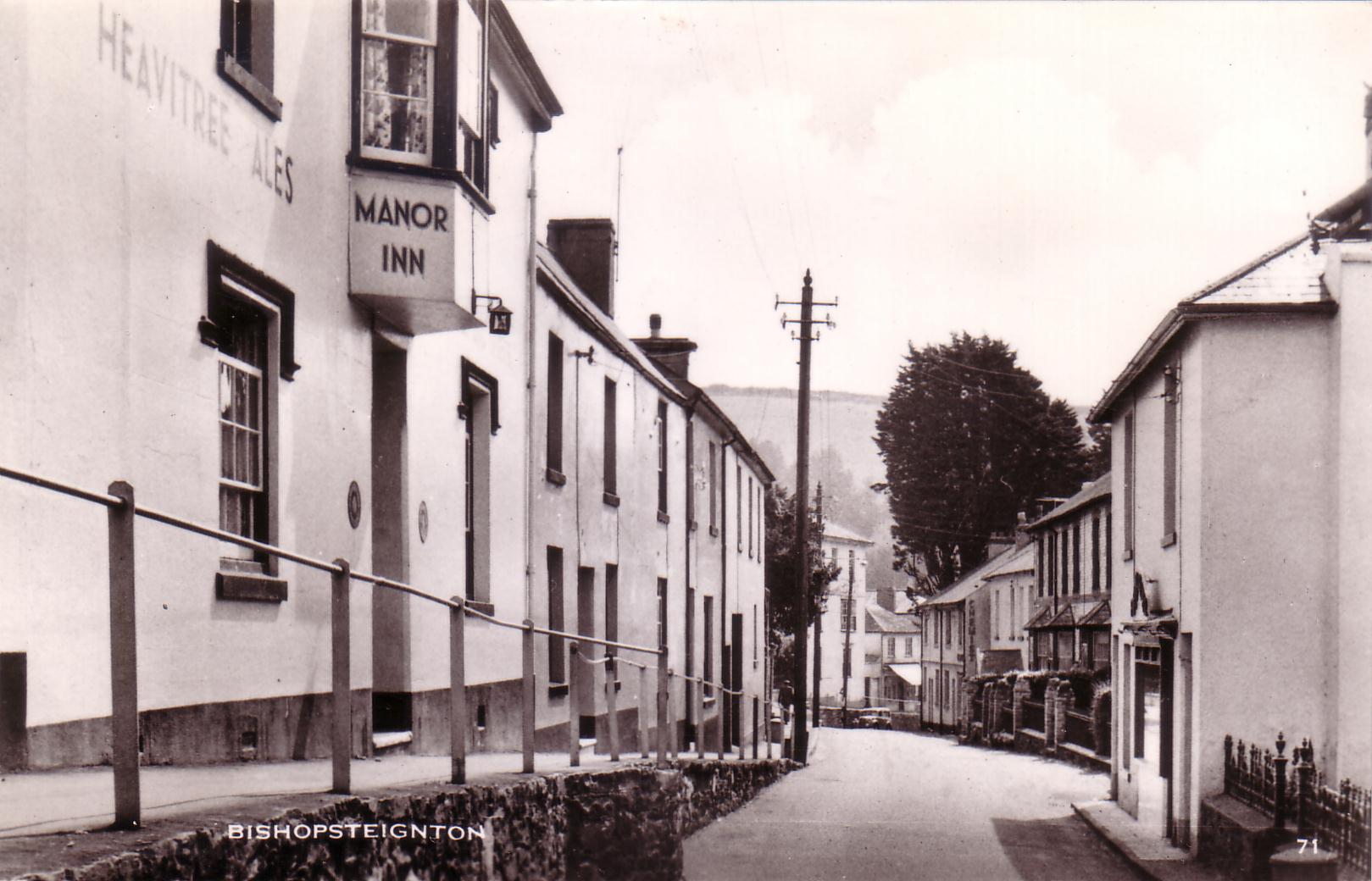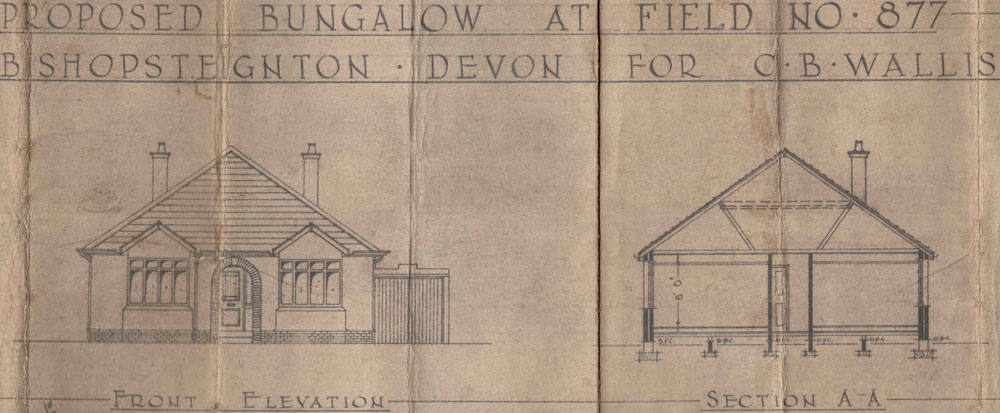Once you have worked on sorting and preserving your family’s archive documents as well as expanding on their stories with some family history research, it can be very useful and a lot of fun to research the history of your house.
This week is a little bit different, but in my view, just as important as the rest of the guidance available in the At Home With Your Archive series. Part 4 does not have such a family or personal focus but looks at the history of our built environment. However, the history of buildings is not so far removed from people as you might think! Researching the history of your home can reveal stories about the people that lived there in the past as well as the people that built it or worked there throughout time. So house history can be just as much a part of family history as your own family tree!

Fore Street, Bishopsteignton. The former Manor Inn on the left: now no longer a pub but a house. Opposite, the former village butcher’s shop: now no longer a shop but a home. Your home may have previously been used for a business!
Until now this series has been personal and family-focussed, but this time, your research has the potential to benefit a lot more people, now and in the future. By researching and sharing the history of your home, the local community gets to know its assets and heritage even better, contributing to a closer and happier community for everyone!
What’s more, local heritage groups can gain more knowledge and understanding and feed it back to the community, generate more interest in their work, take on more volunteers and create more activities and events in the community such as exhibitions, lectures, workshops and more! So have a go at your house history and don’t forget to share what you find out with us via social media or email.
Below are some tips to help you on your way with researching the history of your home or local area:
- If you think there might be some interesting stories about the house you live in, start by talking to your neighbours. This is especially useful if you live in a terrace or somewhere where several homes were built at the same time and developed in similar ways. Finding out what your neighbours know about their homes is a great starting point for discovering more about your house!
- If you live in a current or former pub, shop or other business, get in touch with your local heritage group or historical society and see what they know. Furthermore, businesses such as Breweries or Newsagents that have owned or used several buildings often keep an archive collection. Business archives may have some records of the development of your home (e.g. refurbishment, extensions) so, when we are post-lockdown get in touch and see what you can find out.
- If you live in a relatively new building (built in about the last 20 years) see if you can find out about the land your home was built on. While you may be the first to be making stories about your home, see what you can find out about the land by speaking to local historical societies, heritage organisations or by checking out your local Historic Environment Record online.
- Remember to record what you find out either with pen and paper or digitally (be sure to back-up what you record digitally!). Record where information has come from as well, this is especially helpful if you need to return to a source for more information!

House Plans like this one can give us lots of useful information, not just about a building and local area but about local businesses and tradespeople.
Here are some extremely useful resources to get you started with researching your house history online while in Lockdown:
- The National Archives Research Guides are worth a look for guidance on specific types of records such as Manorial Records and Census Records.
- Find My Past has created another quick guide to beginning to look at your house history with some tips on where to start.
- The Know Your Place project provides detailed and easy-to-use maps enriched with layers of local heritage information and development.
- The Know Your Place project is partly comprised of information directly from ‘Historic Environment Records’ (HERs). These records are digital maps of most, if not all, known points and areas of historic interest all over the UK – and they can all be viewed online for free!
- If you live in Bishopsteignton, see the Devon HER. If you live in another English county, the Heritage Gateway provide a list of all HERs in England.
- If you are in Wales, Cadw provide an HER and guides.
- If you are in Scotland, have a look at Canmore.
- There are also HERs online for those in the Republic of Ireland and Northern Ireland.
- I am unsure what online resources might be available for countries outside of the UK: if you know of similar services available beyond the UK, leave a comment below or please get in touch via social media or email (links below).
Finally, here are some quick activities to fill some of your time in Lockdown that will help to start you contribute to the pool of knowledge of your local area:
- Check out some of our published house-histories like the story of Coombe Cottage, on the Places page for some inspiration for your house history.
- Find your house/road/historic or archaeological landmarks near where you live on your county Historic Environment Record and share this with a member of your household or online with someone elsewhere!
- Get in touch with your neighbours (at a safe distance) and ask if they have done any research into the history of their house or if they know any stories about your home, its previous uses or historic occupants!
If enough people research their house history and their family history, everyone will have stories to put together all over the world!
If you would like further tips and guidance, to view our collections, or want to show us what you have achieved, get in touch on Facebook, Twitter or by email.
